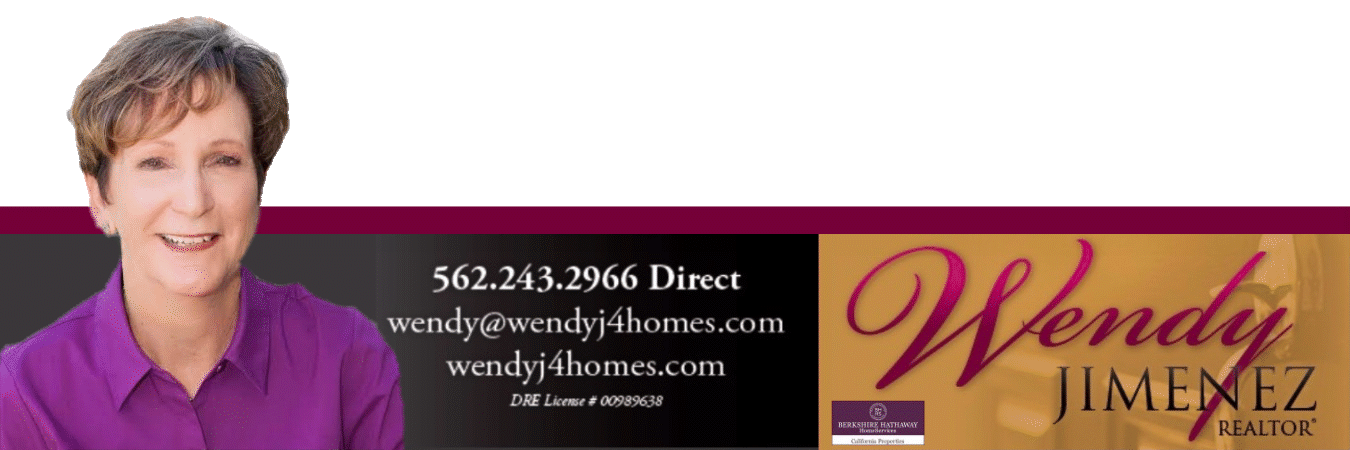Welcome to the most current Housing Trends eNewsletter. This eNewsletter is specially designed for you, with national and local housing information that you may find useful whether you’re in the market for a home, thinking about selling your home, or just interested in homeowner issues in general.
Please click on this link to view the Housing Trends October 2014 Newsletterhttp://wendyjimenez.housingtrendsenewsletter.com
The Housing Trends eNewsletter contains the latest information from the National Association of REALTORS®, the U.S. Census Bureau, Realtor.org reports and other sources.
Housing Trends eNewsletter is filled with local and national real estate sales and price activity provided by MLSs and the National Association of Realtors, U.S. Census Bureau key market indicators, consumer videos, blogs, real estate glossary, mortgage rates and calculators, consumer articles, and REALTOR.com local community reports.
If you are interested in determining the value of your home, click the “Home Evaluator” link for a free evaluation report:
Friday, October 31, 2014
Thursday, October 30, 2014
3 Questions to ask before buying a home

1. Why am I buying a home in the first place?
This truly is the most important question to answer. Forget the finances for a minute. Why did you even begin to consider purchasing a home? For most, the reason has nothing to do with finances. A study by the Joint Center for Housing Studies at Harvard University reveals that the four major reasons people buy a home have nothing to do with money:- A good place to raise children and for them to get a good education
- A place where you and your family feel safe
- More space for you and your family
- Control of the space
2. Where are home values headed?
When looking at future housing values, Home Price Expectation Survey provides a fair assessment. Every quarter, Pulsenomics surveys a nationwide panel of over one hundred economists, real estate experts and investment & market strategists about where prices are headed over the next five years. They then average the projections of all 100+ experts into a single number. Here is what the experts projected in the latest survey:- Home values will appreciate by 4% in 2015.
- The cumulative appreciation will be 19.5% by 2018.
- Even the experts making up the most bearish quartile of the survey still are projecting a cumulative appreciation of over 11.2% by 2018.
3. Where are mortgage interest rates headed?
A buyer must be concerned about more than just prices. The ‘long term cost’ of a home can be dramatically impacted by an increase in mortgage rates. The Mortgage Bankers Association (MBA), the National Association of Realtors, Fannie Mae and Freddie Mac have all projected that mortgage interest rates will increase by approximately one full percentage over the next twelve months.Bottom Line
Only you and your family can know for certain the right time to purchase a home. Answering these questions will help you make that decisionWednesday, October 22, 2014
#1 Reason You Should Sell Now

With winter right around the corner, now may be the best time to get the best price. #KCM2014
Click To Tweet - Powered By CoSchedule
Click To Tweet - Powered By CoSchedule
According to the National Association of Realtors (NAR), historically there is a natural decline in buyers looking to purchase a home (also known as foot traffic) as the winter months approach. Shown in the graph below:
 NAR goes a step further to say that there is a direct correlation between “foot traffic” and “pending contracts/closed sales one to two months later”.
NAR goes a step further to say that there is a direct correlation between “foot traffic” and “pending contracts/closed sales one to two months later”.Bottom Line
The real estate market has done well to recover from the slow start we experienced due in part to the inclement weather at the beginning of 2014. But with those winter months right around the corner, now may be the best time to get the best price.Monday, October 13, 2014
Improving energy efficiency is a great home improvement goal. It can be tackled from several different angles, but the best projects will help you save money on your utility bills and help the local and global environment. Creating and prioritizing a list of projects that will improve the energy efficiency of your home is helpful in knowing where to begin. The general condition of your home, your local climate, and your budget are all important factors in determining how to make the best list possible.
Inadequate insulation and air leakage are the two leading causes of energy waste. Since the average home uses over half its total energy demand on heating and cooling adding new insulation to your home usually dramatically reduces your utility bill. Given the right circumstances and insulation, the project can pay for itself in just a few short years and will add to the resale value of your home. Often, the best place to start is the roof. As heat rises, a larger percentage of energy is often lost through the roof than any other area of the home. Be careful, though, a leaky roof or attic pests can quickly ruin your roof insulation, and you may also need to add roof ventilation to protect your insulation, your roof, and your attic.
Other than roof ventilation, basement ventilation is probably the most common and best insulation project for your home. It can help prevent cold floors in your home, enhance your home's overall insulating value, and possibly create an extra livable space within your home.
Other than roof ventilation, basement ventilation is probably the most common and best insulation project for your home. It can help prevent cold floors in your home, enhance your home's overall insulating value, and possibly create an extra livable space within your home.
Per square foot, windows and doors are the greatest areas of poor insulation and air leakage. Replacement windows can noticeably increase home energy efficiency without the cost of a major home renovation. In fact, high performing double or triple glazed windows can create insulating values on par with your insulated walls. Doors, especially wood doors, may have warped slightly over time or become loose from their jambs, creating an uncomfortable draft and ruining the energy efficiency of that area of your home. Weatherstripping and/or door repair can remedy this problem. Replacement doors can create an even greater air seal and may add to the your home's interior décor and exterior curb appeal.
Heating, cooling, and ventilation systems consistently make technological strides in performance and energy efficiency. Even a heating and cooling system from five or ten years ago may be out-of-date with today's systems. This doesn't mean you need to have your system replaced, but if you have an older system or are having problems with your current system, you may benefit from an overhaul. New furnaces, heat pumps, and other heat sources can generate more heat from less energy use. New systems can also more efficiently move the heat throughout your home. Hydronic heating will not only reduce your energy demand, it will also create a dramatically more uniform and comfortable heat level.
You don't need to be told again that turning off lights, turning the thermostat down an extra degree or two, and setting your hot water heater no higher than 120 degrees will help your home conserve energy. Major appliances, such as refrigerators, that aren't up-to-date can also eat away at your energy savings. These practices and smaller projects probably won't save as much energy as home renovations, but they also don't cost you much, if any, money. In other words, either start or keep turning your lights off when you don't need them, but don't think these habits mean you've suddenly created an energy efficient home.
Friday, October 10, 2014
Thursday, October 9, 2014
Monday, October 6, 2014
Options. While normally a good thing, they can be incredibly overwhelming when trying to pick out your kitchen cabinets and countertops. Depending on the taxonomy, you’ve got no fewer than eight types of countertop materials and a similar number of cabinet styles to choose from, resulting in at least 64 potential pairings. And that’s without factoring in color!
So, how can you make the decision a little more manageable? The easiest way to whittle down your options is by establishing and sticking to your budget. Once you’ve done that, you’ll want to identify the design style you want to achieve. From there it’s all about selecting the material that works best with each aesthetic.
Less Is More: The Contemporary KitchenWhen designing a contemporary kitchen the thing to remember is that it’s all about simplicity. You’ll want to consider shaker cabinets for their sleek lines, multiple color options, and ability to pair well with nearly any type of hardware. Flat cabinets are also a nice option as they afford a simple, yet sophisticated look. If your budget allows, custom cabinets are a choice that will ensure you get the look you’re going for. As far as countertops are concerned, look at solid surface, concrete, stainless steel, or glass.So, how can you make the decision a little more manageable? The easiest way to whittle down your options is by establishing and sticking to your budget. Once you’ve done that, you’ll want to identify the design style you want to achieve. From there it’s all about selecting the material that works best with each aesthetic.
Anything Goes: The Eclectic Kitchen
Built by combining elements from different time periods and different origins, eclectic design creates a unified look by fusing these styles. Which is to say, anything goes. When choosing cabinets, consider distressed, beadboard, inset, or shaker style. Either work well with tile, butcher block, or laminate countertops. While eclectic can be harder to design, when done right it results in a wonderfully unique look.
Not to be confused with contemporary design style, modern design refers to the style popularized from the 1920s through the 1950s. Most refer to the style as mid-century modern. If this is the look you’re after, you’ll want cabinets and countertops that create a sleek and simple look with strong lines. Consider flat cabinets with minimal hardware and laminate or solid surface countertops
Keeping It Classy: The Traditional Kitchen
There’s nothing trendy about a traditional kitchen. Classy and always in style, the traditional kitchen is all about celebrating craftsmanship and attention to detail. When looking at cabinets, focus your attention on shaker, inset, distressed, thermofoil, or, if your budget allows, custom. Either option will look great when paired with granite, solid surface, marble, butcher block, or soapstone countertops.
The Best of Both Styles: The Transitional Kitchen
For many of us it can be hard to decide exactly what style we like best. If you’re stuck between contemporary and traditional, transitional design is the style that would work best. Not surprisingly, transitional design is the go-to style for many homeowners as it offers the best of both traditional and contemporary design. Pair shaker cabinets with granite, quartz, laminate, or butcher block and you’ll create a space that’s clean and inviting.
Getting the Look That Works For You
At the end of the day, the best kitchen design is the design that works best for your tastes, your lifestyle, and your budget. And while it can feel like a daunting task, enlisting the help of a kitchen designer and a reputable kitchen contractor is one of the easiest ways to ensure that the kitchen you’ve always dreamed of is the kitchen that gets built.
Subscribe to:
Posts (Atom)


